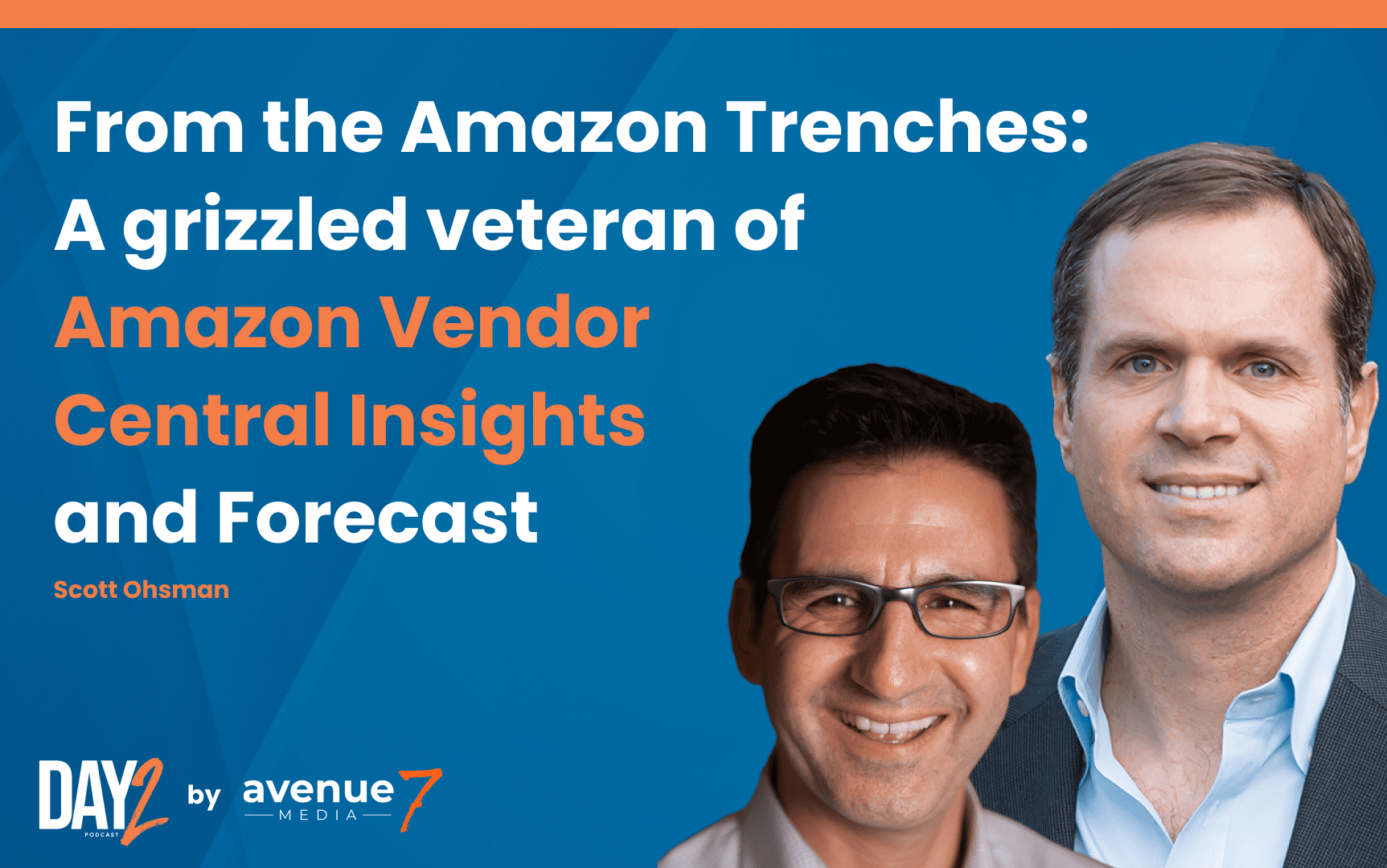In this episode, I am joined by Scott Ohsman, a seasoned veteran of Amazon Vendor Central and an expert in the world of eCommerce.
He is also the VP of Digital Commerce at Quickfire, LLC, Speaker, Brand Strategist, and co-host of the “Always Off Brand” podcast.
Scott Ohsman’s journey in the retail industry began long before eCommerce took center stage. He has seen the industry undergo significant shifts, from brick-and-mortar dominance to the rise of online marketplaces.
With over 28 years of experience in retail and eCommerce, Scott has not only launched over 200 brands on Amazon but also witnessed the platform’s transformation from its early days to the present.
In this insightful conversation, we delve into the changing landscape of Amazon, the evolution of 1P (Vendor Central) and 3P (Third-Party Sellers) dynamics, Amazon’s streamlined logistics, Amazon’s response to antitrust concerns, and more.
1P vs. 3P: A Changing Landscape in the Amazon Ecosystem
When Scott first ventured into the Amazon ecosystem, 1P vendors operating through Vendor Central reigned supreme on the platform. These vendors enjoyed certain privileges, including direct purchase orders from Amazon and access to a wide customer base. Their products were shipped and sold directly by Amazon, instilling a sense of trust and reliability among customers.
However, the Amazon marketplace has evolved significantly over the years, with 3P sellers emerging as formidable competitors to the once-dominant 1P vendors.
One significant factor contributing to the shift is the plateauing of 1P sales. As Amazon has grown, it has faced challenges in scaling its first-party operations efficiently. This has led to a slowdown in the growth of 1P sales, prompting Amazon to rely more heavily on the thriving 3P marketplace.
Amazon’s Streamlined Logistics
In recent times, Amazon, under the leadership of Andy Jassy, has made significant strides in revamping its logistics and supply chain operations. Amazon is moving towards a more streamlined regional logistics plan. These changes have far-reaching implications for both 1P (first-party) and 3P (third-party) sellers on the platform.
One promising aspect of Amazon’s logistics evolution is the potential impact on the Amazon Supply Chain. By offering regional placement and optimizing logistics operations, Amazon aims to make it more cost-effective for sellers to fulfill customer orders.
While it’s still early days for this system, it has the potential to benefit sellers in terms of lower shipping costs and improved delivery speed.
Despite the long-term benefits of these logistics changes, there are challenges to overcome. Transitioning from a national to a regional logistics system is a massive undertaking. Manufacturers and sellers must adapt to sending smaller, more region-specific shipments, which can result in delays and added complexity.
Antitrust Concerns and the FTC Lawsuit
The Federal Trade Commission’s (FTC) lawsuit against Amazon has generated significant attention and debate within the industry.
The lawsuit, which alleges anti-competitive practices by the tech giant, has raised questions about the potential implications for Amazon, sellers on its platform, and the broader eCommerce landscape.
Sellers on Amazon, both 1P and 3P, are closely watching the lawsuit’s developments. If the lawsuit results in regulatory changes or penalties for Amazon, it could affect the overall dynamics of the platform.
For instance, changes in pricing controls or competition policies may impact sellers’ strategies and pricing decisions. Sellers may need to adapt to a potentially altered eCommerce environment.
Join Scott and I in this conversation as we talk about these issues at length and some more eCommerce news!
Additional Resources:
Always Off Brand Podcast by Scott Ohsman: https://alwaysoffbrand.libsyn.com/
—
Book your Discovery Call today to learn how the experienced team at Avenue7Media can help you grow your brand on Amazon and beyond…











